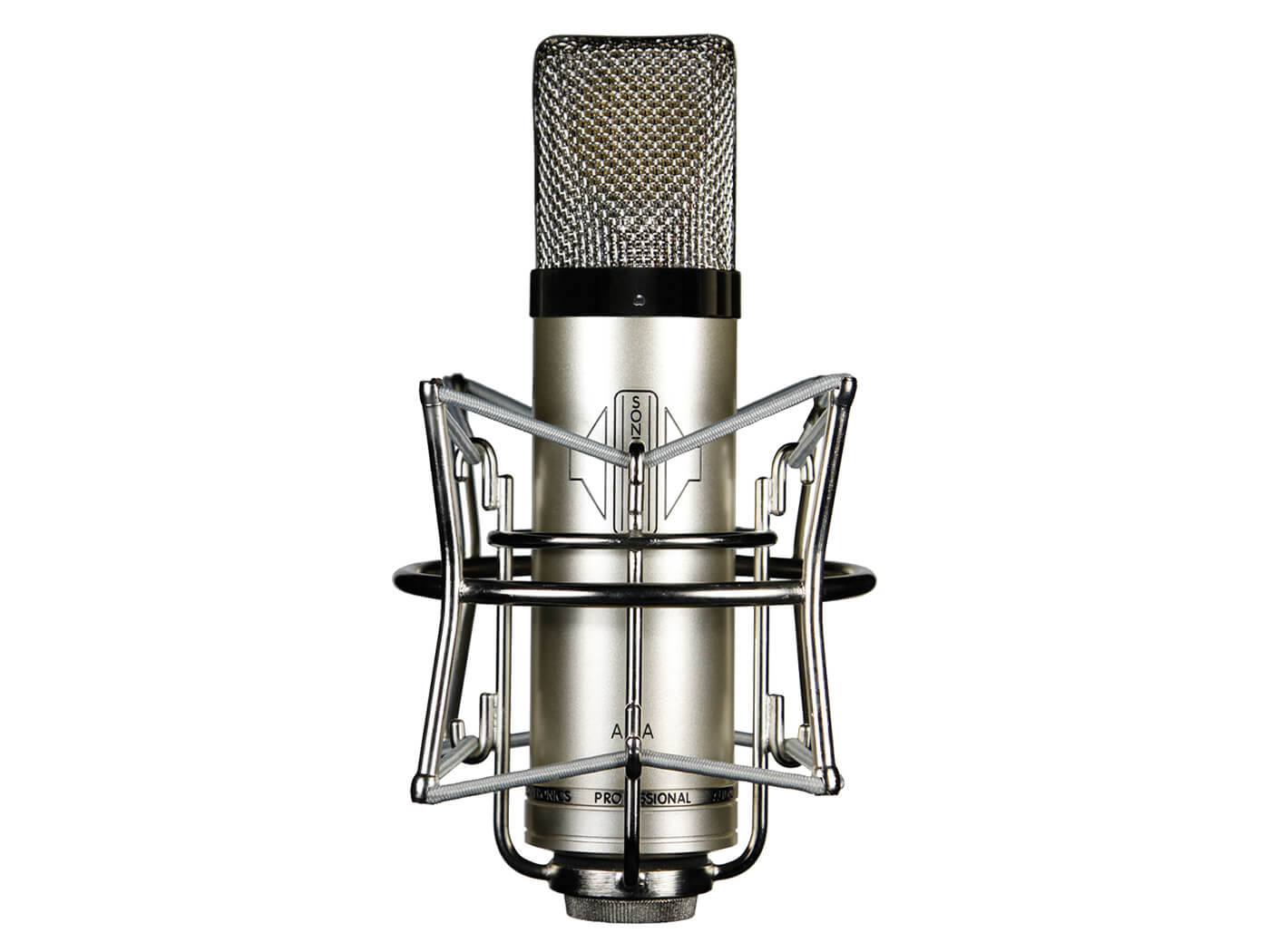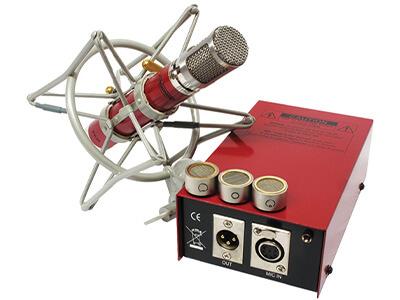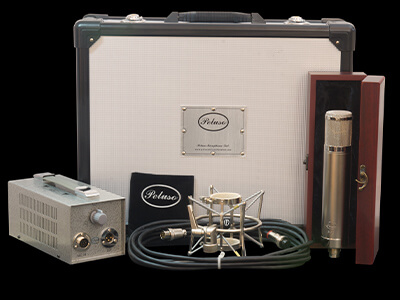Review: Sontronics Aria
Designed for vocals, Sontronics’ Aria looks classy and has an impressive range of accessories.

Sontronics Aria

Price £899
Contact sontronics.com
By Sontronics’ standards, the new Aria is borderline conservative in appearance, but we think it’s all the better for it. The cylindrical body has a chubby 5cm diameter and a very attractive silver-metallic finish with a greenish tinge. The company logo is cut into the metalwork and highlighted in black, with a contrasting silver ring separating the body from the screw-on base.
The head grille looks like a hybrid of the classic AKG C12 and a tapered Neumann design. The outer mesh is nice and chunky with at least one fine extra layer on the inside. It’s also nickel-plated, which gives the Aria a very classy appearance and nothing obstructs the capsule itself.
Although the capsule is well protected, it’s still possible to see that it has AKG-style edge termination rather than a Neumann-style centre tap. So we’d expect an extended high-frequency response with some degree of presence lift. The Aria is fixed cardioid but the rear diaphragm means that pattern switching could have been an option.
Shipping with a lovely box and superb flight case it’s Sontronics’ classiest offering yet
Design Philosophy
Sontronics has adopted a distinct philosophy when it comes to microphone design. Trevor Coley from Sontronics says that they seek to create “application specific mics to help the end user”. This is an acknowledgement that many of the great sounds people associate with classic condenser microphones were only realised after a fair amount of processing.
Many of today’s recordists haven’t had professional training, and may not have access to the signal processors required to ‘finesse’ raw microphone sounds. So Coley’s approach is to create mics that sound ‘right’ for specific applications – in this case, vocals.
The design process took over three years because Sontronics wanted to avoid simply rehashing a classic mic. Extended tests were carried out with top engineers like Paul Epworth and several in-house guys at Abbey Road.
Sontronics selected a JJ-branded valve made by Tesla in the Slovak Republic. The often-overlooked power supply is a complete revision from past designs with extra mains filtering to reject external interference. Interestingly, some of the technology used is taken from power supply designs used for hospital equipment.
On the Vox
We jumped straight into some vocal tests and we were not disappointed. The Aria has a breathy presence, flattering yet well-controlled mids, ample cut and definition and no low-end boominess. We encountered no sibilance issues whatsoever.
We sensed there’s a degree of very low-frequency roll-off – way below the vocal frequency range – that’s intended to eliminate rumble and undesirable low-frequency content. This may disadvantage the Aria as a bass or kick drum mic, but it’s the frequency range that many pro engineers habitually filter off when recording other instruments.
The Aria particularly excelled when we used it up close. Proximity induced low mid boost only becomes obvious when placed within a hand span of the talent. We also noticed that the cardioid pattern is fairly wide, so the off-axis response is forgiving for singers who struggle to stay on mic and it’s possible to achieve dry, up-front vocal sounds without filter-type screens.
The Aria isn’t a cheap microphone so it may be seen as an extravagance if it’s only suitable for vocals. Fortunately, it’s a very capable all-rounder too, with the silky and shimmering highs providing impressive detail resolution for delicate acoustic guitar picking, percussion and even clean electric guitar.
Shipping in a lovely engraved wooden box with a generous length of quality interconnect cable and superb flight case, we’d say that this is Sontronics’ classiest offering yet. The excellent military-grade screw-on connectors are also a massive step up from the flimsy multi-pin Cannon connectors that come with so many modern valve microphones.
Key Features
- Response: 20Hz to 20kHz
- Sensitivity:18mV/Pa -33dB+/-1.5dB (0dB=1V/Pa 1000Hz)
- Polar Pettern: Cardioid
- Pad: -10dB
- Filter: 75Hz
- Impedance:<200 Ohms
- Equivalent Noise Level: 18dB (A-weighted)
- Max SPL for 0.5% THD@1000Hz: 125dB
- Power Supply: SPS-2115/230V
- Connector: 8 pin screw on
Alternatives

Avantone Pro
CV12 £400
The Avantone CV12 is a nine-pattern valve microphone with -10dB pad and 80Hz roll off switches and a Russian-made 6072A tube.

Peluso
P12 £999
Inspired by the AKG C12, but with nine polar patterns, the Peluso P12 is assembled in the USA. For colour, the output transformer is a custom unit made by Tom Reichenbach of CineMag Transformers.